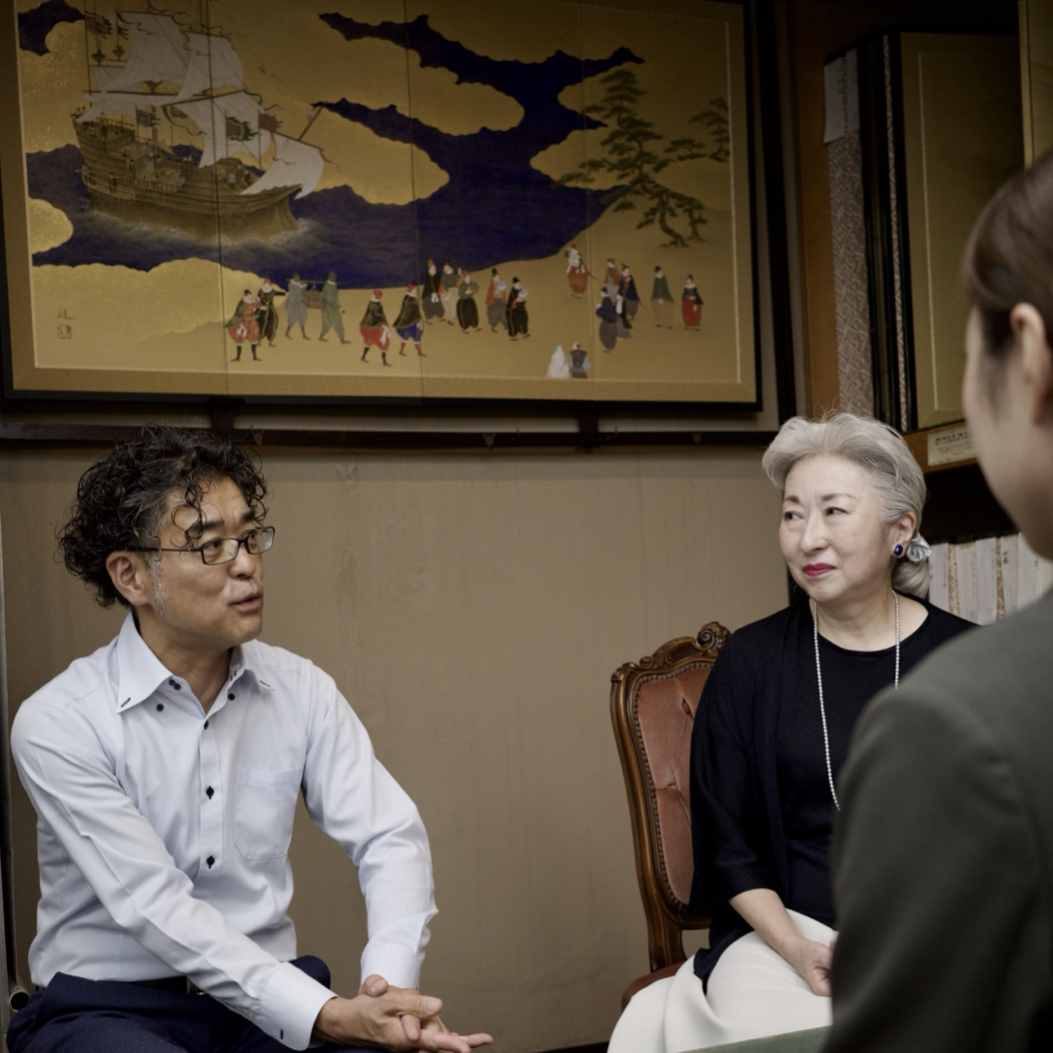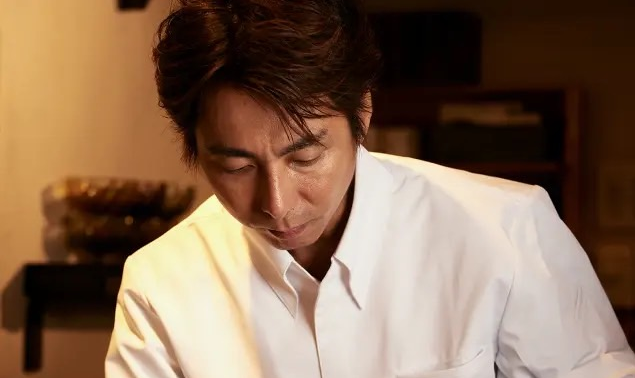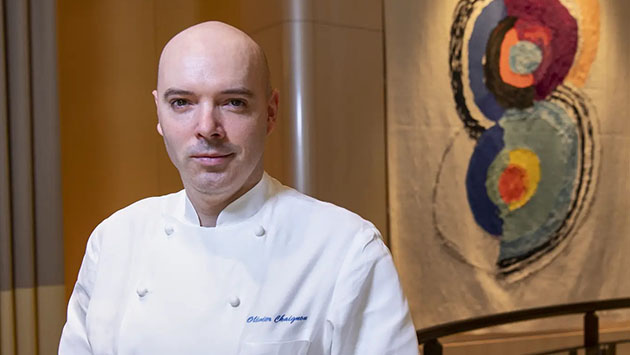Kunio Tokuoka
Executive Chef, Kyoto Kitcho
Executive Chef Kunio Tokuoka of Kyoto Kitcho pursues Japanese cuisine that is one step ahead of its time while remaining grounded in tradition. Akaito Saffron®︎ is in the pinnacle of Japanese cuisine, which is created by combining a diverse range of seasonal ingredients.(Akaito Limited, Yoko Takagi)
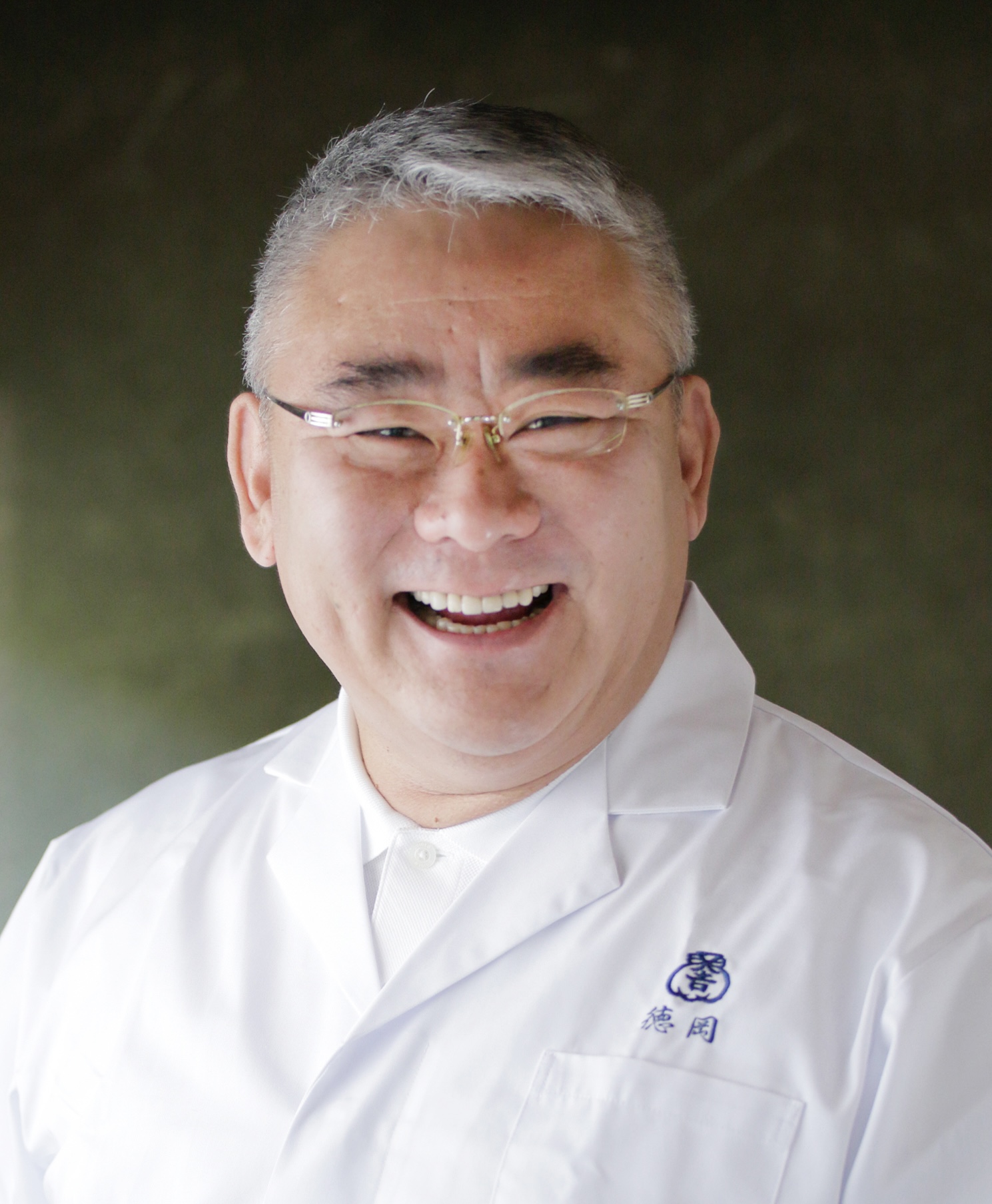
1960 Born in Osaka. Grandson of founder Teiichi Yuki
1980 Started training at Koraibashi Kitcho
1983 Started working at Tokyo Kitcho
1987 Started working at Kyoto Kitcho Arashiyama Main Restaurant
1995 Appointed as Executive Chef of Kyoto Kitcho, Arashiyama Main Restaurant
2009 President and CEO, KYOTO KITCHO Co., Ltd.)
Until he decided to pursue a career as a chef at the age of 20
Chef Kunio Tokuoka, the third generation executive chef of Kyoto Kitcho, is one of the leading chefs of Japanese cuisine. His personality is very friendly and his eyes sparkle as he talks about the various dishes on his menu that use saffron.
Chef Tokuoka was born into a long-established Japanese restaurant family that has been in business since 1930, but he faced some surprising struggles before he decided to pursue a full-fledged career in the culinary arts.
“Originally, I didn’t want to follow in the footsteps of my family,” says Chef Tokuoka.
He became obsessed with playing in a band in high school and set his sights on a career in music, but his parents and other relatives opposed the idea. According to Chef Tokuoka, he could have disregarded them and pursued a career in music, but he wanted to convince them instead.
“Music is something that entertains people with the skills you acquire,” says Chef Tokuoka, “and it is not a bad thing.” But he was still at a loss as to how he could convince them.
Chef Tokuoka decided to consult Master Priest Soko Morinaga of Daishuin, the head temple of Ryoanji of the Myoshinji School of the Rinzai sect, a priest he had known since childhood and one that his families and relatives all respected. After having listened to Chef Tokuoka’s concerns, Master Morinaga recommended he train as a monk while thinking about his situation deeper. Desperately searching for his own path, Chef Tokuoka did not hesitate to take up the training, willing to shave off his long hair on the spot.
During his rigorous training, he was in charge of preparing the bath daily, but not by filling the tub from the hot water faucet. He had to gather firewood from the mountain, cut and dry it, manage the stock, and burn it to heat water for the bath. He worked tirelessly under the instructions from his senior monks. His days started before dawn, seated zen meditation in the dark, enduring cold, sleepiness, and hunger. Once, without any reason, he could not stop the tears from welling up, while chopping firewood.
While sitting in a dark hall for zazen, one morning, he suddenly felt the sensation of the sun rising from behind a beautiful mountain nearby and, at that moment, a question came to him: “My desire to pursue a career in music is not a bad thing, but why does everyone around me feel negative. Why is it so hard for me? How can I change this situation into a positive one?” He then thought, “What if I become a chef and take over Kitcho? It’s not that I dislike cooking to begin with. Everyone would be happy. I wanted to express my music to the world from Japan, but could I not also do it through world-class cuisine?”
With this in mind, it seemed the closest Chef Tokuoka could get to the world was to master the art of cooking alongside his grandfather, Teiichi Yuki, founder of Kyoto Kitcho. He communicated his decision to his family and relatives through Master Morinaga, and his days as a trainee monk ended; at 20, he started his culinary career.
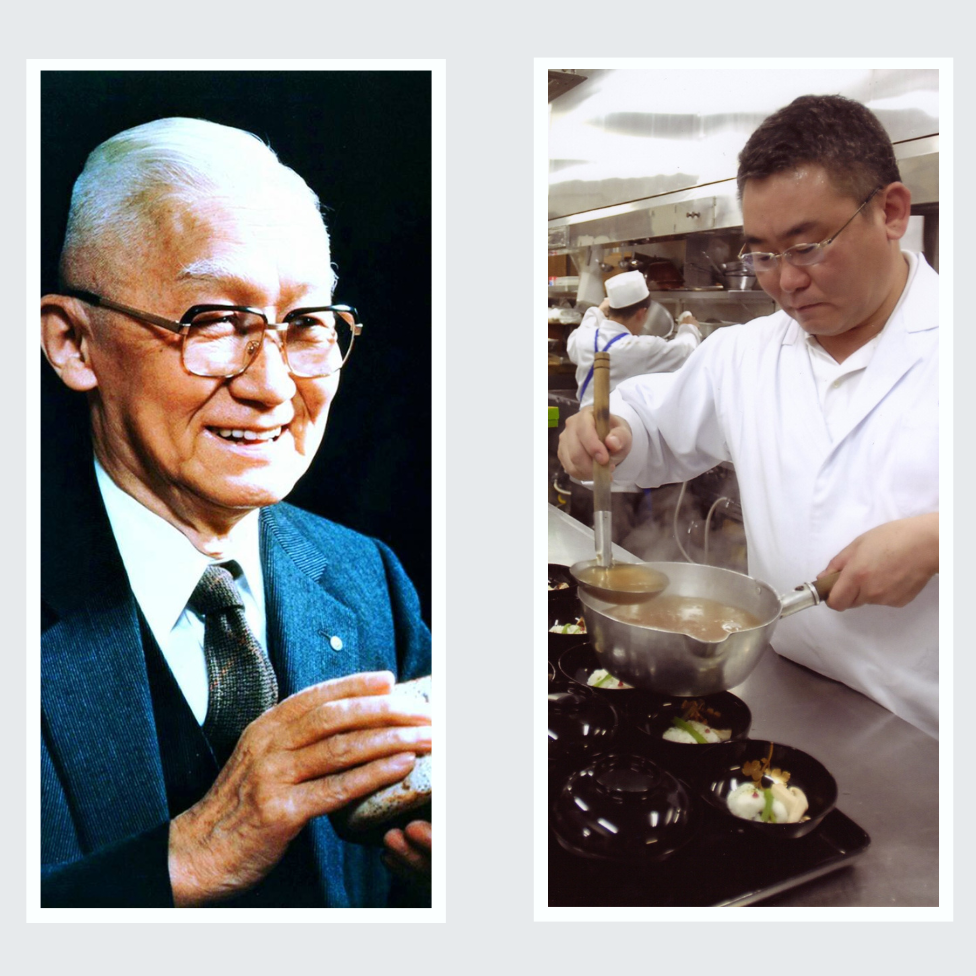
Overcoming difficulties to establish Kyoto Kitcho of today
Chef Tokuoka was trained at Koraibashi Kitcho in Osaka first, then at Tokyo Kitcho, and from the age of 35 he took over as executive chef at the Kyoto Kitcho Arashiyama Main Restaurant. The bursting of Japan’s asset price bubble in 1989 plunged Chef Tokuoka into difficult times, even to the point that he considered quitting. He remained on the culinary path, however, because he loved Teiichi Yuki’s humanity and his cuisine.
Chef Tokuoka continued to face many difficulties while shouldering the onerous responsibilities as the CEO of Kyoto Kitcho Corporation, the most difficult of all being the COVID19 pandemic.
In March 2020, the US went into lockdown because of the pandemic, and Chef Tokuoka had just returned to his home in Japan from an event in Hawaii, only to find the COVID19 death toll rising and all the reservations for April and May at Kyoto Kitcho cancelled. With no end in sight to the pandemic and the string of ensuing cancellations, his anxiety grew daily. He applied for bank loans to cope with the risk of business losses; the banks were non-committal, going only as far as to say that they would try their best. At this point, Chef Tokuoka decided that he must try everything possible to improve the efficiency of the business, and resorted to working for three days without sleep on a business recovery strategy. He started a home delivery service to boost revenue and meticulously monitored the profit and loss statement daily. He cut salaries by 10%, but did not lay off any employees.
In time, Chef Tokuoka was allowed to open his restaurants under reservation only and on the condition of not serving alcoholic beverages. Under his strategy, he found that he was able to cut costs considerably compared to costs before COVID19 and run a more efficient business. Moreover, the home delivery service continues to this day, and he feels that the Japanese gift-giving cycle has expanded from ochugen (mid-year gifts) and oseibo (year-end gifts) to more of a year-round activity.
Chef Tokuoka’s response to the COVID19 pandemic—the hardest tribulation he says that he has been through—gave rise to benefits in the form of more efficient management and new services.
Akaito Saffron®︎ with Japanese cuisine
Saffron is usually something that one does not think of as being associated with Japanese cuisine. When talking to Chairman Ford of Akaito Limited at the Le Collège Culinaire du Japon annual gala dinner, Chef Tokuoka was surprised to hear that saffron is grown in Japan, and became enthusiastic to create new ways of using saffron in Japanese cuisine, based on the traditions and aesthetics of Japanese culture, which enjoys the harmonious combination of ingredients by season.
In a jelly-based dish, for example, Chef Tokuoka dices jellied broth and mixes it with saffron-infused jelly, which acts as an accent. In the seafood dishes that go well with saffron, instead of using fish meat, Chef Tokuoka uses the bones, skin, and entrails—parts that are normally discarded—with great care (e.g., temperature control) to create clear and thick broth, which is partly combined with saffron. The chawan mushi (steamed egg custard) is made into a royale with such a thickened saffron broth.
Since Akaito’s 2023 Saffron Harvest of last November, Chef Tokuoka has been incorporating Akaito Saffron®︎ into Japanese seasonal cuisine for his regular customers at the Kyoto Kitcho Arashiyama Main Restaurant to receive their feedback. It has been well received in the kaiseki course; specifically, Akaito Saffron®︎ in hassun (assorted dishes using the best seasonal ingredients from the mountain and oceans) is gradually becoming one of the restaurant’s signature dishes. In the future, Kyoto Kitcho will continue to create new and unique dishes with Akaito Saffron®︎ that match perfectly each of the four seasons.
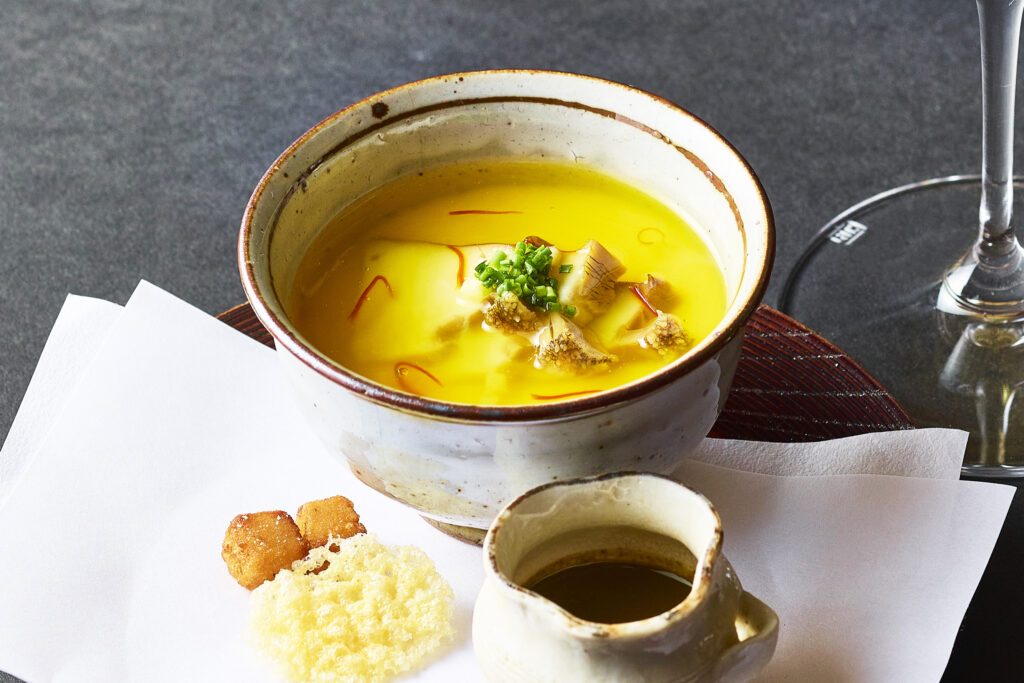
Global communication through Japanese cuisine inherited from the Kitcho founder, Teiichi Yuki
Chef Tokuoka’s cuisine carries on the tradition of Teiichi Yuki’s words “world-famous Japanese cuisine,” and has earned a long list of prestigious awards and accolades, including three Michelin stars and the 2024 Luxury Japan Award “Restaurant of the Year” first place with the highest score from the selection committee. Their comment: “Chef Tokuoka’s cuisine, which is full of warmth and surprises, based on tradition but with a free spirit and the best hospitality, can be enjoyed in a space that changes its atmosphere with the seasons and is calm and serene.”
In 2008, Chef Tokuoka was in charge of the social dinner at the G8 Summit in Toyako, Hokkaido. He has participated in countless events and given lectures in countries around the world.
Within Japan, Chef Tokuoka is actively involved in regional revitalisation and the resolution of various issues in the field of primary industry. He is Honorary Director of The Society for Science of Cultural Indusutry as well as a Visiting Professor at Tokyo University of Agriculture.
While preserving the traditions of Japanese culture and cuisine, Chef Tokuoka continues to challenge himself with an approach to food that is in tune with the modern times. Akaito is very much looking forward to our ongoing collaborations with Chef Tokuoka, as we also envision to pass on the Japanese saffron’s history and culture to future generations, and transform our production site in Saga prefecture from a marginal village into a new saffron village.
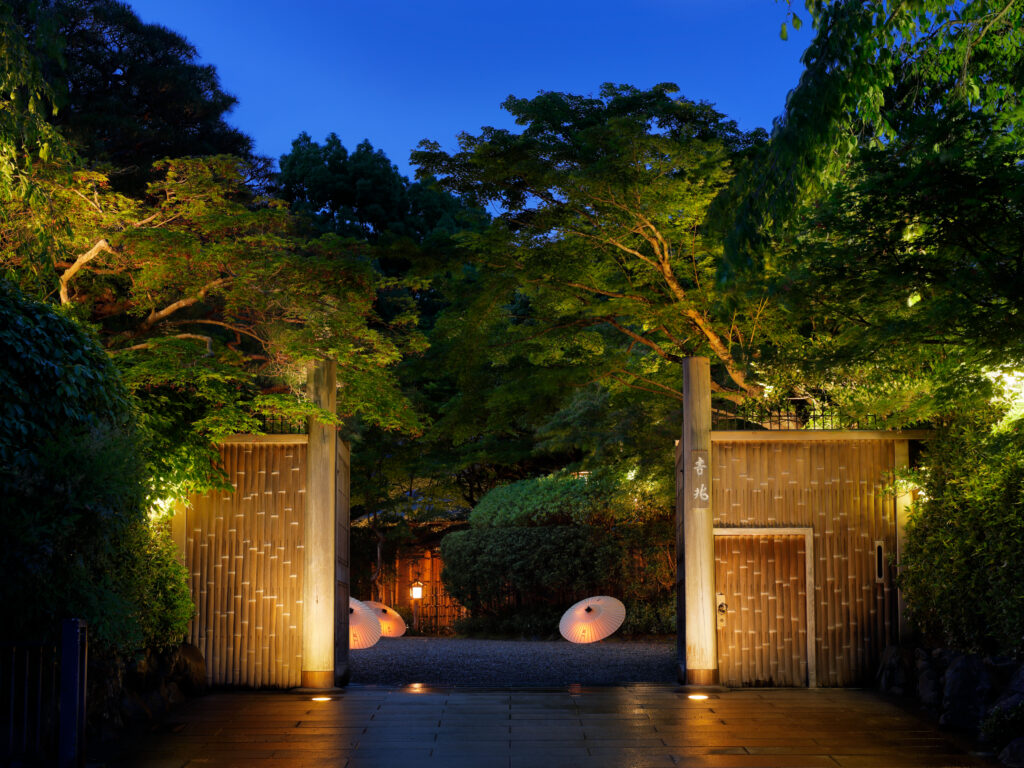
Kyoto Kitcho
https://kyoto-kitcho.com/en/
58, Susukinobaba-cho, Saga Tenryuji, Ukyo-ku, Kyoto City,Kyoto 616-8385, Japan
Instagram: @kyotokitcho_official



